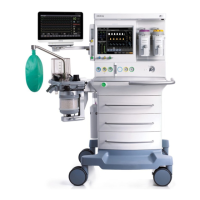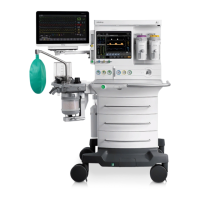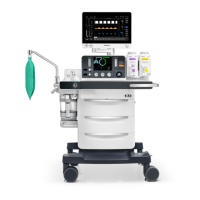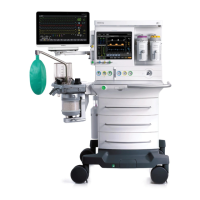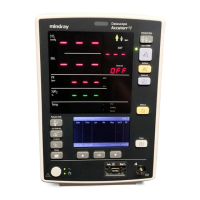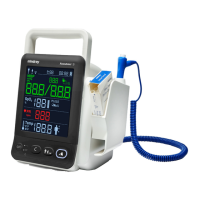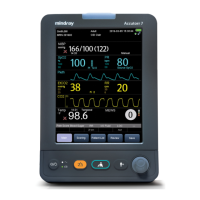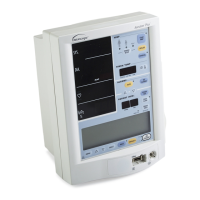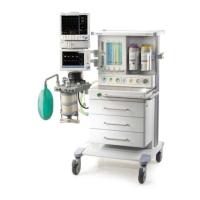5-20
4. Verify that the following FiO2 high alarm signals activate:
The FiO2 Too High message appears on the screen.
An alarm tone sounds.
5. Set the FiO2 high alarm limit to the maximum value.
6. Verify that the alarm signals cease.
5.13.4.4 Paw Alarm Test
1. Set the peak low alarm limit to the lowest value.
2. Adjust the peak high alarm limit setting to a value about 5 to 8 cmH2O lower than the peak
pressure displayed on the screen.
3. Verify that the following (high) pressure alarms activate:
a. The Paw Too High message appears on the screen.
b. An alarm tone sounds.
c. Inspiration ends and expiration begins when the pressure meets the high alarm limit.
4. Set the peak high alarm limit to 65 (cmH2O).
5. Verify that the alarm signals cease.
6. Set the peak low alarm limit to 50 (cmH2O).
7. Verify that the following (low) pressure alarms activate:
a. The Paw Too Low message appears on the screen.
b. An alarm tone sounds.
8. Set the PAW low alarm limit to 1 (cmH2O).
9. Verify that the alarm signals cease.
5.13.4.5 Minute Ventilation Alarm Test
1. Set the MV high and low alarm limits to the highest values.
2. Verify that the following alarms activate:
The MV Too Low message appears on the screen.
An alarm tone sounds.
3. Set the MV low alarm limit to the lowest value.
4. Verify that the alarm signals cease.
5. Set the MV high alarm limit to the lowest value.
6. Verify that the following alarms activate:
The MV Too High message appears on the screen.
An alarm tone sounds.
7. Set the MV high alarm limit to the highest value.
8. Verify that the alarm signals cease.
5.13.4.6 Apnea Alarm Test
1. Run the anesthesia machine in VCV mode for a period of time to ensure that more than six
breathing cycles appear on the screen.
